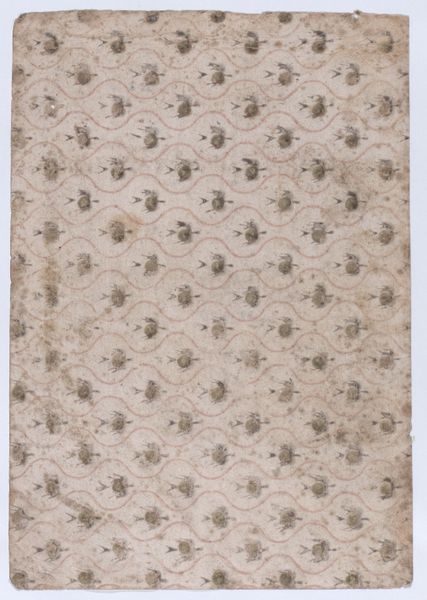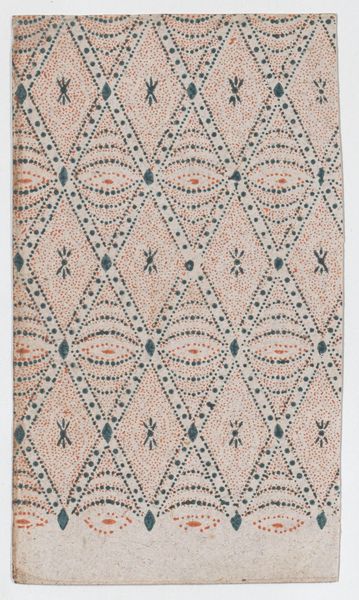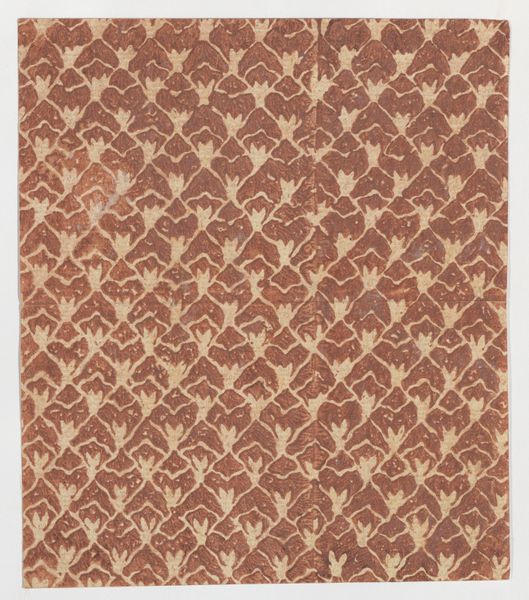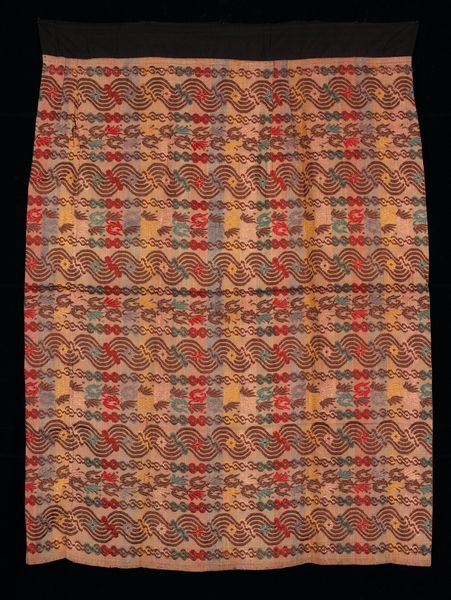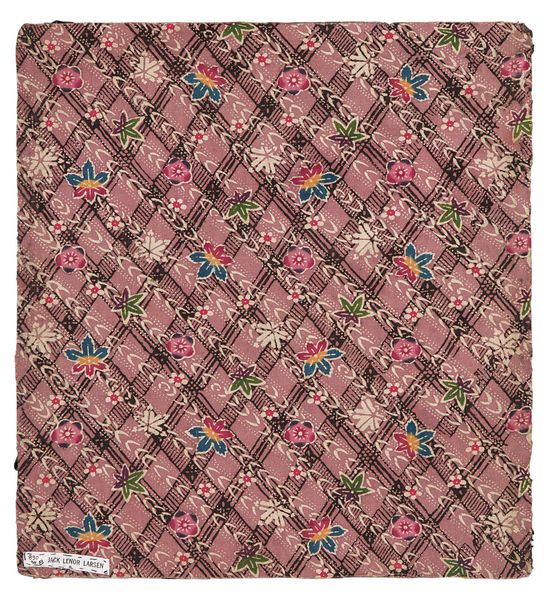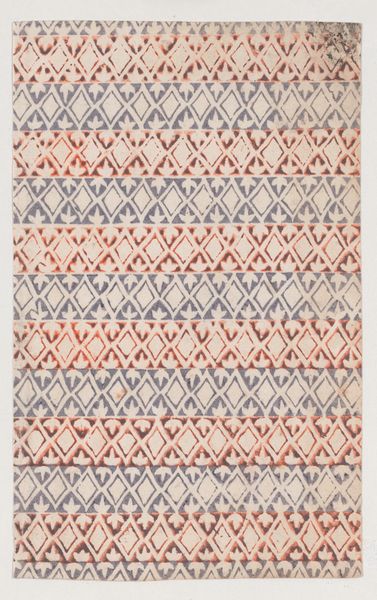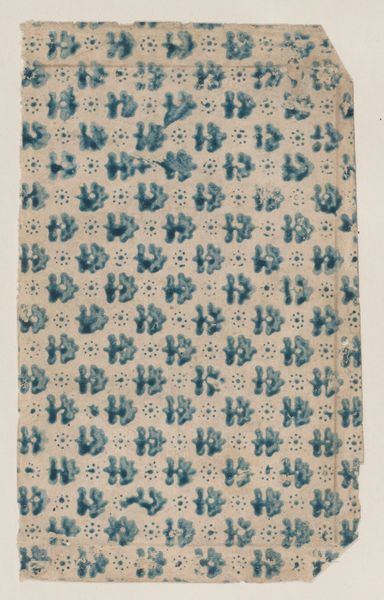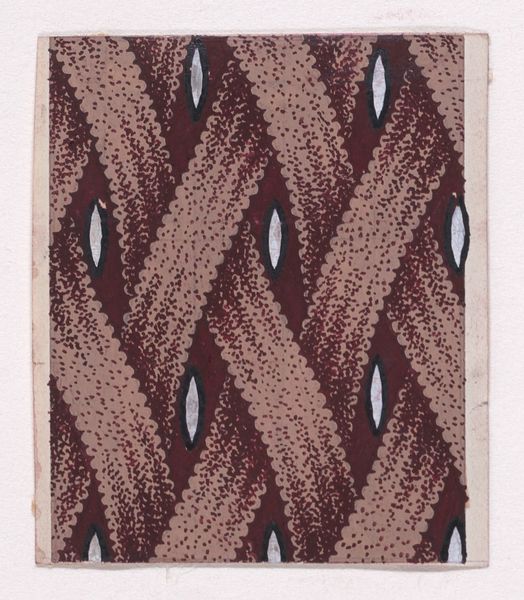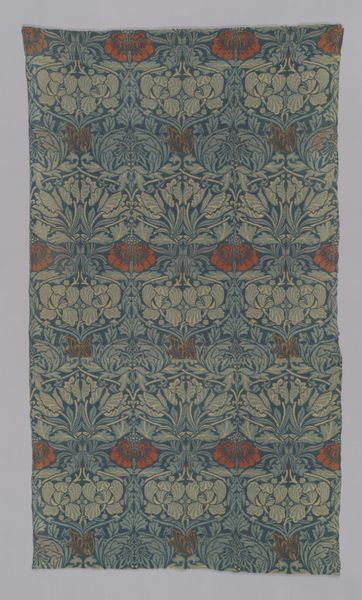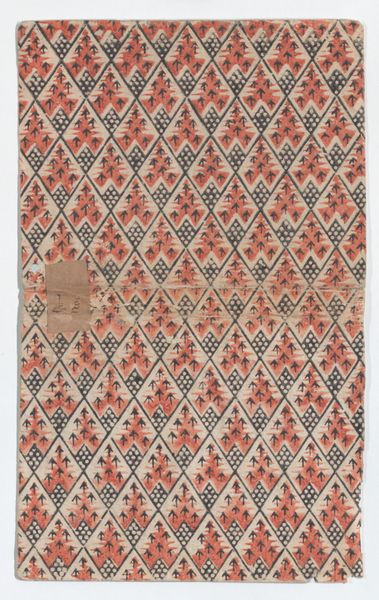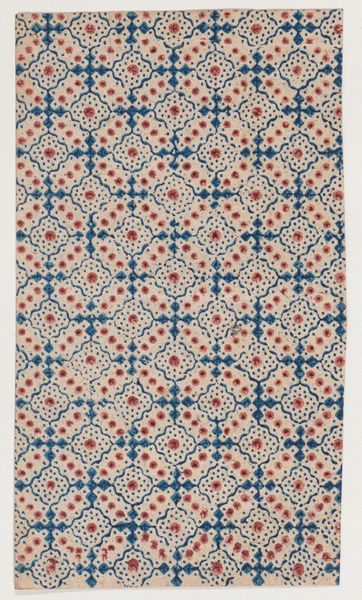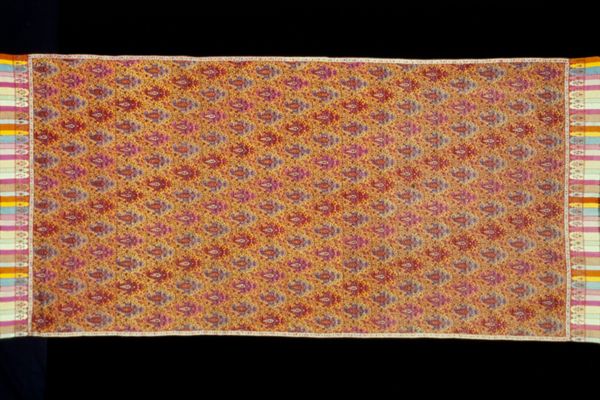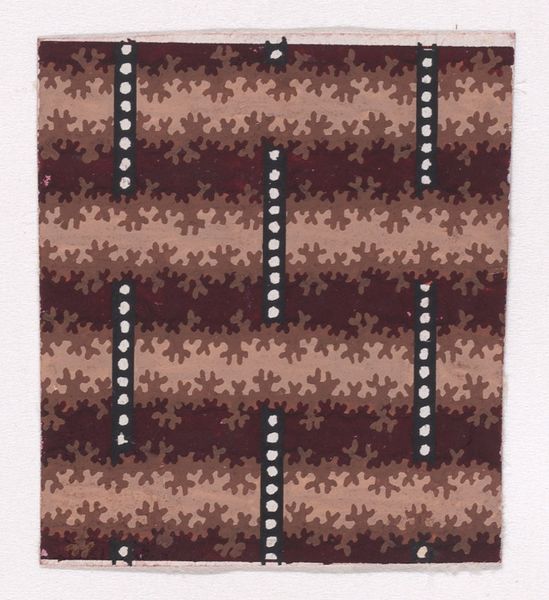
Sheet with overall blue and red diamond pattern 1800 - 1900
0:00
0:00
drawing, print, weaving, textile
#
drawing
# print
#
weaving
#
textile
#
geometric
#
textile design
#
decorative-art
#
imprinted textile
#
layered pattern
Dimensions: Sheet: 5 13/16 × 3 3/8 in. (14.8 × 8.6 cm)
Copyright: Public Domain
Curator: Here we have a "Sheet with overall blue and red diamond pattern," an anonymous textile piece from the 19th century held at the Met. Editor: My initial impression is one of quiet domesticity. The soft hues of faded red and blue, the regular, almost hypnotic rhythm of the diamonds… it feels like a comforting remnant from another era. Curator: Indeed. The creation of textiles like this often involved a whole community. The process—from growing and harvesting raw materials to the intricate steps of dyeing, weaving, and printing—was a social act, embedding these pieces with cultural meaning that commercial production obscures. Editor: Absolutely. When we see these textiles displayed in a museum, removed from their original context, it is crucial to question that placement, that transition from utility to art object. This pattern undoubtedly adorned a home. But whose home? And what labour underpinned its creation? Were women the primary creators of it? How would it speak of gender dynamics back then? Curator: The repetitive pattern and the slight imperfections inherent in handmade textiles speak volumes about labor. And yes, you are right. Although made by unknown artisans, often women and sometimes even enslaved individuals. The availability of cotton and dyes were closely linked to colonial trade routes and the exploitation of labor in the Americas and Asia. So its seemingly innocent geometric designs hide complex stories. Editor: Seeing the holes and frays on this particular piece brings an emotional charge. The wear and tear highlight its materiality, a connection to lives lived. These aren't just abstract geometric patterns. These are social documents imprinted on cloth, which speaks to labour, identity, and politics. It's fascinating how decorative art is deemed just decorative. Curator: Decorative arts played an important role as forms of personal and collective expression within the household. But as this piece illustrates, they're never just ornamentation, they reflect the socio-economic and political landscape. Thinking about textile patterns within this frame can really challenge art historical cannons. Editor: Examining this imprinted textile urges us to think critically about history, design, and who we exclude from our narratives when defining art and craft, creation and commodity. Curator: Absolutely, approaching artifacts from intersectional and diverse perspectives allows for the weaving of multiple accounts within conventional, institutionalized views of the art object. Editor: Definitely. This humble patterned textile has shown me a way to revisit histories, revealing intricate layers and concealed meaning through collective expression.
Comments
No comments
Be the first to comment and join the conversation on the ultimate creative platform.
